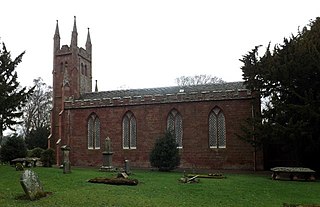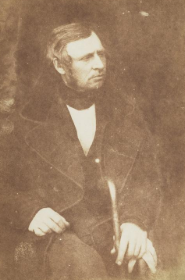
East Lothian is one of the 32 council areas of Scotland, as well as a historic county, registration county and lieutenancy area. The county was called Haddingtonshire until 1921.

Dunbar is a town on the North Sea coast in East Lothian in the south-east of Scotland, approximately 30 miles east of Edinburgh and 30 mi (50 km) from the English border north of Berwick-upon-Tweed.

The Royal Burgh of Haddington is a town in East Lothian, Scotland. It is the main administrative, cultural and geographical centre for East Lothian. It lies about 17 miles east of Edinburgh. The name Haddington is Anglo-Saxon, dating from the sixth or seventh century AD when the area was incorporated into the kingdom of Bernicia. The town, like the rest of the Lothian region, was ceded by King Edgar of England and became part of Scotland in the tenth century. Haddington received Burgh status, one of the earliest to do so, during the reign of David I (1124–1153), giving it trading rights which encouraged its growth into a market town.

Pencaitland is a village in East Lothian, Scotland, about 12 miles south-east of Edinburgh, 5 mi (8 km) south-west of Haddington, and 1 mi (2 km) east of Ormiston.

Whittingehame is a parish with a small village in East Lothian, Scotland, about halfway between Haddington and Dunbar, and near East Linton. The area is on the slopes of the Lammermuir Hills. Whittingehame Tower dates from the 15th century and remains a residence.

Auldhame and Scoughall are hamlets in East Lothian, Scotland. They are close to the town of North Berwick and the village of Whitekirk, and are approximately 25 miles (40 km) east of Edinburgh.
Balthere of Tyninghame was a Northumbrian hermit and abbot, resident in East Lothian during the 8th century.

Garvald is a village south-east of Haddington in East Lothian, Scotland. It lies on the Papana Water south of the B6370, east of Gifford. The combined parish of Garvald and Bara, borders Whittingehame to the East, Morham to the North, Yester to the West, and Lauder to the South. It is mainly an agricultural parish. The red freestone once constantly mined in this parish was well known throughout the whole country.
The Archdeaconry of Lothian, located in modern-day Scotland, was a sub-division of the diocese of St Andrews, one of two archdeaconries within the diocese and in essence that part of the diocese which lay south of the Forth. The Lothian archdeaconry was headed by the Archdeacon of Lothian, a subordinate of the Bishop of St Andrews.
Tyninghame is a small settlement in East Lothian, Scotland, about two miles north-east of East Linton. Together with the nearby settlement of Whitekirk, it gives its name to the parish of Whitekirk and Tyninghame.

The Collegiate Church of St Mary the Virgin is a Church of Scotland parish church in Haddington, East Lothian, Scotland.
Sir Matthew Alistair Grant was a British businessman.

Hew Scott (1791–1872) was a minister of the Church of Scotland parish of Anstruther Wester. He is largely remembered as a religious researcher and author. His "magnum opus" is the comprehensive, multi-volume work, Fasti Ecclesiae Scoticanae: The succession of ministers in the parish churches of Scotland, from the reformation, A.D. 1560, to the present time. This is a detailed, biographical record of each of the ministers of each of the parishes of the Church of Scotland from 1560 to 1870.. It was first published between 1866 and 1871 but it is regularly updated by the Church of Scotland.

Tyninghame House is a mansion in East Lothian, Scotland. It is located by the mouth of the River Tyne, 2⁄3-mile (1.1 km) east of Tyninghame, and 3+3⁄4 miles (6.0 km) west of Dunbar. There was a manor at Tyninghame in 1094, and it was later a property of the Lauder of The Bass family. In the 17th century, it was sold to the Earl of Haddington. The present building dates from 1829 when the 9th Earl of Haddington employed William Burn to greatly enlarge the house in the Baronial style. In 1987 the contents of the house were sold, and the house was divided into flats.

Spott is a small village on the eastern fringes of East Lothian in Scotland, just over 2 miles (3.2 km) south-west of Dunbar. The village straddles an unclassified road leading from the main A1 highway at grid reference NT673755.

Charles Hamilton, 5th Earl of Haddington, was a Scottish nobleman.

John Cook (1807–1874) was a Scottish minister who served as Moderator of the General Assembly of the Church of Scotland for the year 1866/67. In common with other members of the ecclesiastical family of Cook, he was a strong supporter of the moderate party in the Scottish church.
Helen Hope was a Scottish forester and countess of Haddington through marriage. She planted many trees in Haddingtonshire and created Binning Wood at Tyninghame.

James Wallace (1770–1852) was a minister of the Church of Scotland who served as Moderator of the General Assembly in 1831, the highest position in the Scottish church.



















